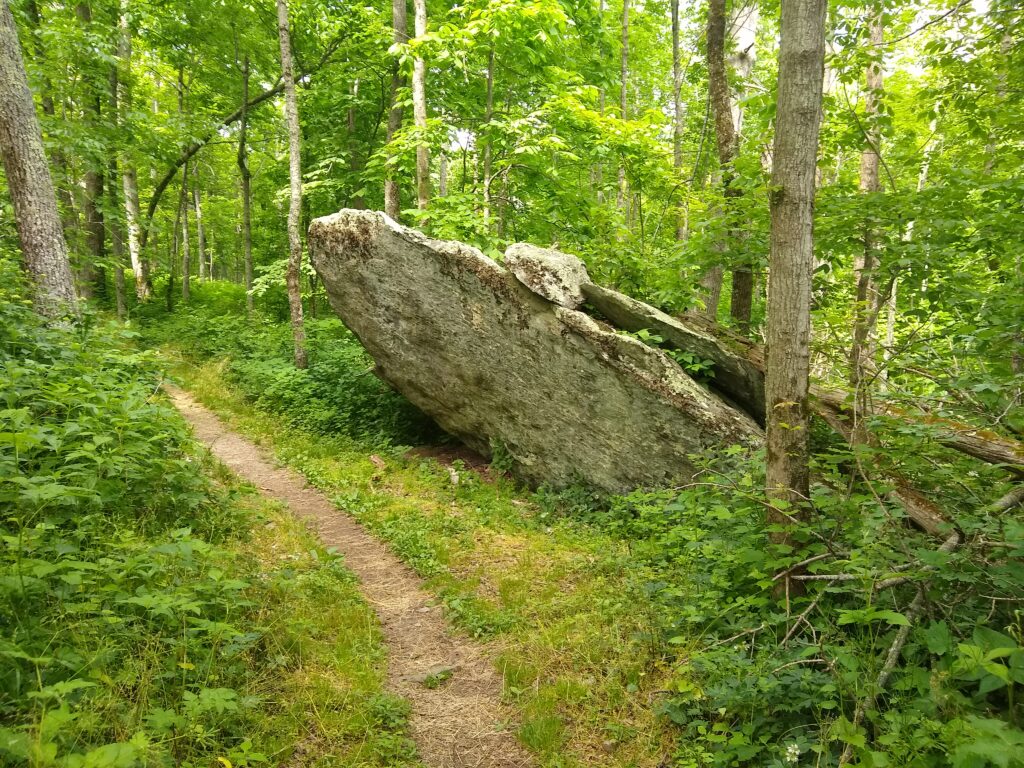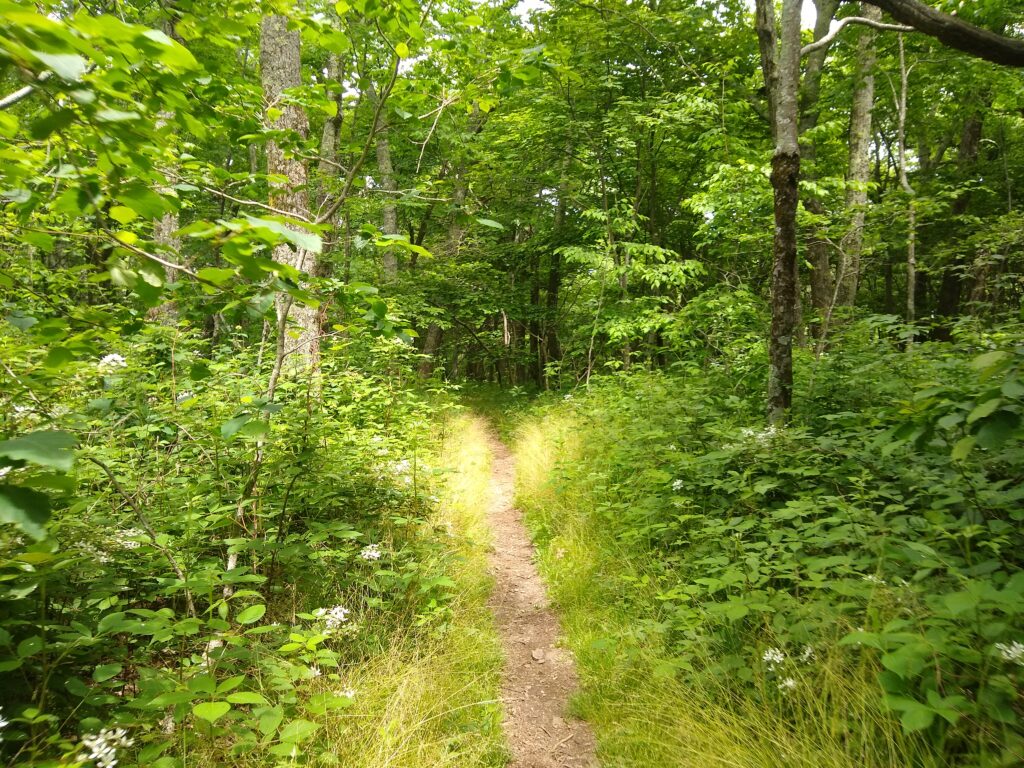- Miles 898.3-919.0 (20.2 mi.)
- Total ascent: 5344’; descent 4596’
With a car, or merely camping, Shenandoah would be a lot of fun.
It’s a shame the park’s water resources and limited sites require bigger miles. The camp stores, laundry, and showers available every 25-ish miles make the experience less heavy and grungy. And while the Blue Ridge Parkway was close to, and sometimes within sight of the road, the builders knew what they were doing. Cliffsides and forest buffers are mostly sufficient, and crossings are virtually always at parking lots or safer stretches of road.
The price is our longest day yet, on the heels of our next longest day–and followed tomorrow by a new longest day. We hurt, but we have built ourselves to this point. Neither of us is injured, nor even close.
The best parts of today occurred at its beginning and end. The first, leaving camp, was a chance encounter with a 75-year-old trail maintainer. He began caring for the Pinefield Shelter and the surrounding few miles in 1986, and did so through his kids’ childhood. He’d treat his kids to campfire meals at the shelter, a tradition he continued by buying hikers lunch at one of the “waysides,” what Shenandoah National Park calls their hot food counters (actually, the Big Meadows Wayside is being remodeled, so it currently functions as a convenience store). Because the grill is closed, the old man had resorted to giving every thru-hiker $5. He told us to get ourselves treat with it, which we fully plan to do.
Five dollars isn’t a lot of money. What it represents is an old man giving back, damn the circumstances. It felt like a grandpa (he was a great-grandpa, he told us) getting you an ice cream sandwich just because he wanted to see you smile.
That interaction was a great way to begin a tough day. We made 13 miles by noon, which was painful but crucial for reaching the camp store by 5 p.m. (we got there at 3:36, thank you very much).
The second gem of today was that store. Built by the CCC in the 1930s, it was a well-maintained, rough-hewn wood and stone longhouse. Although it is the smallest and most hiker-geared of the camp stores in Shenandoah, it had all of the snacks and cold drinks we could want. On either side was a bathroom with a shower, and out front, the other three hikers, all of whom who’d done the same hike we had that day, were the most talkative we’d seen them.
Walking 20 miles has a way of pulling the eye from price tags. We shamelessly spent $55 for dinner, breakfast, and snacks, and promptly ate 1,200 calories each–subs, Naked Juice, Pop Tarts, chips–at the picnic table near the store’s entrance.
Although we could have stayed at the campground near the store, we walked another 0.8 after our pig-out to a nearby hut, where we’re tenting. Our site is free and devoid of road noise, with lovely tree cover.
The park clearly likes keeping AT hikers separated from the families and RVers, with site bypasses and financial incentives. I get it, though I do feel a little “separate but equal.”
Tomorrow, we will have a record three near-trail food options. We will pass the most popular part of the park. We hit the trail at 6:30 a.m., which will be easier with the bear box and pre-made instant coffee.
Like a lot of places we’ve been, we wish we could simply camp here. Although it sounds nice, it’s just a temptation, like hot food or alcohol. We signed up to hike, and we have an adventure in DC just days ahead. We can dedicate a ship to “the Shennies” sometime in the future, once our bodies forgive us for this challenge.



